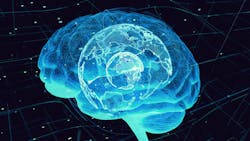Neuroscience graduate students at Children’s Hospital Los Angeles have developed an automated method that could save time and work for laboratories around the country by streamlining the process of identifying and mapping brain cells.
After two years of zoom calls and teaching themselves to code in R, a statistical programming language, Ali Marandi Ghoddousi and his fellow students developed a technique that could streamline the painstaking work of identifying, mapping, and analyzing cells. Dubbed SCAMPR— for single-cell automated multiplex pipeline for RNA quantification and spatial mapping— this method automates the identification of different cell types by analyzing their levels of gene expression and where they are located in a tissue section.
SCAMPR can also detect multiple genes that might appear in a cell together.
A few automated programs can do this as well, but most look for the mRNA expressed in the cell nucleus. However, the bulk of a cell’s mRNA is found in the cell cytoplasm—the watery internal part of the cell.

